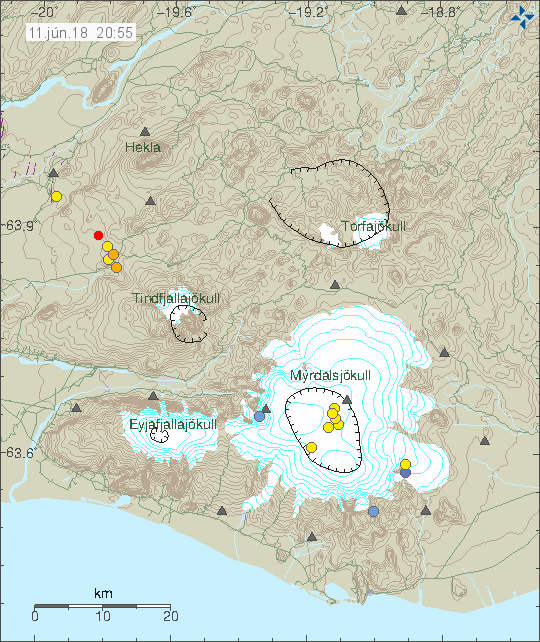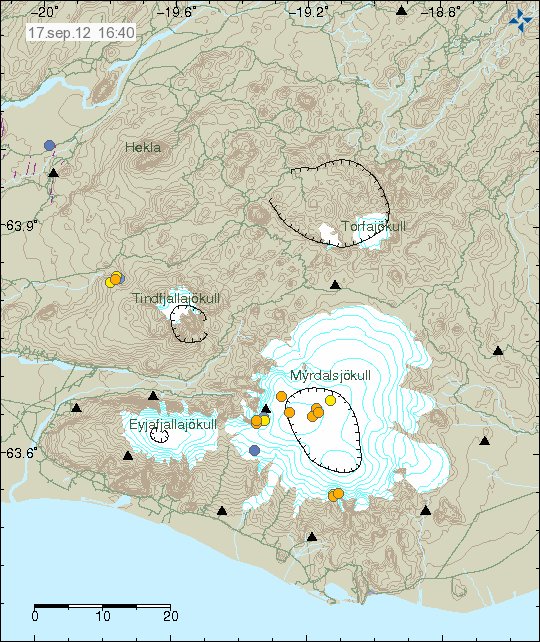While all the active volcanoes in Iceland get all the press and coverage. There are volcanoes in Iceland that are not so active and have remain dormant for thousands of years now and currently do not show any signs of activity. Some have some hot spring activity. But that is about it for them. The following volcanoes in Iceland have not erupted in historical times. Some have not even erupted in past 12.000 years best to my knowledge. But as history has proved in other parts of the world. An dormant volcano can start to erupt when it feels like it and without any warning at all in some cases.
This is based on Global Volcanism Program data. So it might be subject to errors and updates.
Volcano
Hrómundartindur – Last eruption is unknown. This volcano is an stratovolcano.
Grensdalur – Last eruption was in Pleistocene and its current status is Pleistocene-Fumarolic. This volcano is an stratovolcano.
Grímsnes – Last eruption is believed to have taken place around 3500 BC. But this volcano is marked as tephrochronology. This volcano makes crater rows when it erupts.
Geysir – This volcano last erupted in Pleistocene and is marked as Pleistocene-Geysers. This is an stratovolcano.
Hveravellir – This volcano last erupted around the year 950 AD. It is currently marked as radiocarbon. This is an subglacial volcano.
Hofsjökull – This volcano has erupted sometimes in the last 12.000 years. It has the marking holocene. This is an subglacial volcano. The second volcano in this system is not marked in GVP database. But that volcano is named Kerlingarfjöll. I do not know when it last erupted. There is also an embeeded second volcano in Hofsjökull volcano that is Independent from the main Hofsjökull volcano (yes, this is the case it seems). I do not have any idea when that did last erupt.
Esjufjöll – This is an sub-glacier volcano in Vatnajökull glacier. Its last eruption is uncertain. But is believed to taken place in the year 1927. From the year 2000 this volcano has been showing signs of increased activity. This volcano is an stratovolcano.
Fremrinamur – This volcano is last believed to have erupted in the year 1200 BC. This volcano is an stratovolcano.
Þeystareykjabunga – This volcano last erupted around the year 900 BC. This volcano is an shield volcano.
Snæfellsjökull – This volcano last erupted around 200 AD. It is currently marked as radiocarbon. This is an stratovolcano.
Helgrindur (also known as Lysuhóll) – This volcano has no record of eruption. But it is thought that it erupted sometimes in the past 12.000 years. But exact time is not known. This volcano makes pyroclastic cones. This volcano is the smallest volcano system in Iceland.
Tindafjallajökull – It is unknown if this volcano has erupted during holocene. But the GVP information say that dozen of small eruptions took place in early holocene. This is an stratovolcano.
Snæfell – This volcano is located east of Vatnajökull glacier and south of Kverkfjöll volcano. It was once believed that this volcano was extinct. But new research into it has changed that opinion. This is most likely an stratovolcano. But I do not have it confirmed. This volcano has at least not erupted for several thousands years or more. Currently there are no information about this volcano in the Global Volcanism Program database.
Skrokkalda – This volcano is dormant. But I do not know if it has erupted in historical times or not, but I do no think that is the case. I am also not sure what type of volcano it is.
There are few more volcanoes missing due the fact that they are not in the Global Volcanism Program database. But I have them on a map that I own. So they are going to be added later when I update this blog post.


